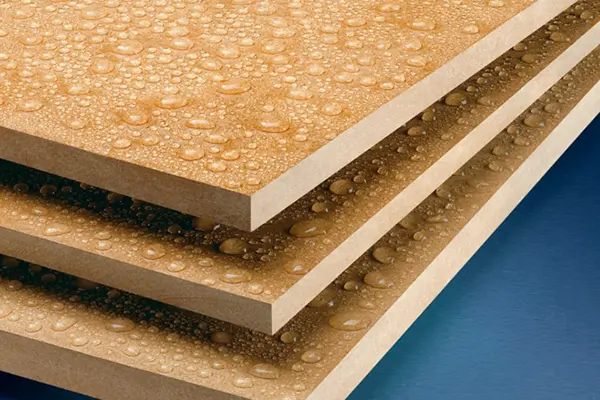Medium Density Fiberboard (MDF) is a popular material in the construction and furniture industries due to its versatility, affordability, and smooth surface finish. However, one of the most critical aspects to consider when using MDF is its moisture rating. Understanding the moisture rating of MDF is essential for selecting the right type of MDF for specific applications and ensuring its durability and longevity. This article explores what the moisture rating of MDF entails, the different types of MDF based on moisture resistance, and their appropriate uses.
Understanding MDF and Its Composition
MDF is an engineered wood product made from wood fibers, wax, and resin, which are compressed and heated to form dense, uniform panels. The result is a smooth, consistent material that is easy to work with and ideal for a wide range of applications, from cabinetry and shelving to decorative moldings and furniture.
However, like all wood-based products, MDF is susceptible to moisture. Exposure to moisture can cause MDF to swell, warp, or delaminate, compromising its structural integrity and appearance. Therefore, understanding the moisture rating of MDF is crucial for its proper application and maintenance.
Moisture Rating of MDF
The moisture rating of MDF refers to its ability to resist moisture and humidity. There are several types of MDF with varying levels of moisture resistance:
- Standard MDF: This type of MDF is suitable for indoor applications where moisture and humidity levels are low. Standard MDF is not treated for moisture resistance and should not be used in areas prone to dampness, such as bathrooms or kitchens. Its moisture rating is the lowest among the different types of MDF, making it ideal for dry environments.
- Moisture Resistant MDF (MR MDF): MR MDF is treated with special resins and chemicals that enhance its resistance to moisture. This type of MDF is suitable for areas with higher humidity levels, such as kitchens, bathrooms, and laundry rooms. MR MDF offers improved performance in moist conditions, reducing the risk of swelling and warping. It is crucial to note, however, that MR MDF is moisture-resistant, not waterproof. Prolonged exposure to water can still damage the material.
- Exterior Grade MDF: Also known as waterproof MDF or Exterior MDF, this type of MDF is designed for outdoor use and environments with extreme moisture exposure. Exterior grade MDF is treated with high levels of resin and additives that make it highly resistant to water, humidity, and fungal growth. It is ideal for applications such as exterior cladding, garden furniture, and outdoor signage.
Applications Based on MDF Moisture Rating
Selecting the right type of MDF based on its moisture rating is essential for ensuring the longevity and performance of the material in specific applications. Here are some recommended uses for each type of MDF:
- Standard MDF: Ideal for dry, indoor environments, standard MDF is commonly used for furniture, cabinetry, shelving, and decorative moldings. It provides a smooth surface for painting and veneering, making it a popular choice for interior design projects.
- Moisture Resistant MDF (MR MDF): Suitable for areas with higher humidity levels, MR MDF is perfect for bathroom vanities, kitchen cabinets, and laundry room shelving. Its enhanced moisture resistance helps maintain structural integrity and appearance in damp conditions.
- Exterior Grade MDF: Designed for outdoor use, exterior grade MDF is used for garden furniture, exterior cladding, outdoor signage, and other applications exposed to the elements. Its high moisture resistance ensures durability and longevity in harsh weather conditions.
Maintaining MDF’s Moisture Resistance
Regardless of the type of MDF used, proper maintenance is essential to preserve its moisture resistance and extend its lifespan. Here are some tips for maintaining MDF:
- Sealing Edges: The edges of MDF are more susceptible to moisture absorption. Sealing the edges with paint, varnish, or edge banding can help prevent moisture penetration.
- Proper Installation: Ensuring proper installation techniques, such as using moisture-resistant adhesives and fasteners, can enhance the durability of MDF in moist environments.
- Regular Inspection: Regularly inspecting MDF for signs of moisture damage, such as swelling, warping, or discoloration, can help address issues early and prevent further damage.
Conclusion
Understanding the moisture rating of MDF is crucial for selecting the right type of MDF for specific applications and ensuring its durability and longevity. Standard MDF is suitable for dry, indoor environments, while Moisture Resistant MDF (MR MDF) is ideal for areas with higher humidity. Exterior Grade MDF is designed for outdoor use and environments with extreme moisture exposure. By choosing the appropriate type of MDF based on its moisture rating and following proper maintenance practices, you can ensure that your MDF projects remain durable, functional, and visually appealing.
Post time: 07-24-2024












